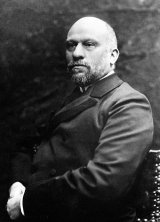Fear Page #4
THE learned and eloquent Professor of Physiology at Turin has given us in the book which he has entitled “Fear,” an analysis of this mental condition and its accompanying physical states, which, marked as it is by scientific accuracy and couched in charming and even in poetical diction, will take high rank as a popular exposition of our knowledge of the expression of one of the most interesting of the emotions of both men and animals.
Genre: Health
Genre: Health
- Year:
- 1896
- 977 Views
And if we are able now to add to his discoveries and to correct some of the judgments in his works, it is only thus because science marches onward with such giant strides that we, although we were his contemporaries, belong even now to a later age, as the context of this work will more clearly show. The theory of evolution will always remain the foundation-stone of modern science, but certain principles formulated by Spencer and Darwin will be modified as our knowledge of the adaptation of organs to their functions increases. IV Darwin attributed, I think, too much importance to the will considered as the cause of expression. We younger physiologists are more mechanical; we examine the organism more minutely, and it is in the structure of the organs that we seek the reasons of their functions. I shall here give an example of this different way in which I have explained a few phenomena. Rabbits are, as is well known, extremely timid animals, and it is remarkable that no other blushes and grows pale so easily as the rabbit. The changes in circulation produced by psychical impressions and by the emotions are more observable in the ears than in the face, as is indeed the case with many men. In Northern Italy, after someone has received a vigorous scolding, I have heard the popular expression used: 'He caught it hot enough to make his ears turn red.’ In the middle of the auricle of the rabbit’s ear there is an artery, running from the base to the summit, which ramifies and winds in such a manner as to form two veins on the edge of the auricle. In 1854, Moritz Schiff observed that this artery showed alternate movements of contraction and expansion, not corresponding to the systole and diastole of the heart. If one looks at the rabbit’s ear against the light, from time to time one sees the artery decrease in diameter, until at last it quite disappears, then it increases again, and, as it swells, it expands all its branches, so that the whole ear becomes of a vivid red and also warmer. This fulness of blood in the ear lasts a few seconds, then artery and branches contract and the redness gradually dies away. Schiff called this artery an accessory heart, because he imagined that the contractions and expansions observed by him in the vessels of the ear were to promote a better circulation of blood in the ear of the rabbit, just as the heart does for the rest of the body.
Translation
Translate and read this book in other languages:
Select another language:
- - Select -
- 简体中文 (Chinese - Simplified)
- 繁體中文 (Chinese - Traditional)
- Español (Spanish)
- Esperanto (Esperanto)
- 日本語 (Japanese)
- Português (Portuguese)
- Deutsch (German)
- العربية (Arabic)
- Français (French)
- Русский (Russian)
- ಕನ್ನಡ (Kannada)
- 한국어 (Korean)
- עברית (Hebrew)
- Gaeilge (Irish)
- Українська (Ukrainian)
- اردو (Urdu)
- Magyar (Hungarian)
- मानक हिन्दी (Hindi)
- Indonesia (Indonesian)
- Italiano (Italian)
- தமிழ் (Tamil)
- Türkçe (Turkish)
- తెలుగు (Telugu)
- ภาษาไทย (Thai)
- Tiếng Việt (Vietnamese)
- Čeština (Czech)
- Polski (Polish)
- Bahasa Indonesia (Indonesian)
- Românește (Romanian)
- Nederlands (Dutch)
- Ελληνικά (Greek)
- Latinum (Latin)
- Svenska (Swedish)
- Dansk (Danish)
- Suomi (Finnish)
- فارسی (Persian)
- ייִדיש (Yiddish)
- հայերեն (Armenian)
- Norsk (Norwegian)
- English (English)
Citation
Use the citation below to add this book to your bibliography:
Style:MLAChicagoAPA
"Fear Books." Literature.com. STANDS4 LLC, 2024. Web. 14 May 2024. <https://www.literature.com/book/fear_137>.




Discuss this Fear book with the community:
Report Comment
We're doing our best to make sure our content is useful, accurate and safe.
If by any chance you spot an inappropriate comment while navigating through our website please use this form to let us know, and we'll take care of it shortly.
Attachment
You need to be logged in to favorite.
Log In